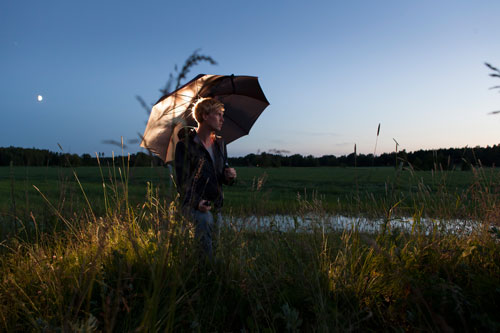Erik Johansson (born 1985) is a photographer and visual artist from Sweden based in Prague, Czech Republic. His work can be described as surreal world created by combining different photographs. Erik works on both personal and commissioned projects with clients all around the world. In contrast to traditional photography he doesn't capture moments, he captures ideas with the help of his camera and imagination. The goal is to make it look as realistic as possible even if the scene itself contains impossible elements. In the end it all comes down to problem solving, finding a way to capture the impossible.
To Erik it's always important with a high level of realism in his work. He want's the viewer to feel like they are part of the scene. Although his work consists of a lot of work in post-production and combining photogaphs he always tries to capture as much as possible in camera. "No one can tell you that it doesn’t look realistic if you actually captured it for real."
Light and perspective are crucial parts when combining images in a realistic way and if some parts are not possible to shoot on location, a similar scene has to be built up in a controlled environment. Having an understanding of both photography and post production is very important to make everything come together seamlessly. Every photograph and part has its purpose.
Erik always do all the post production himself to be in complete control of the end result. The idea, photography and post production are all connected. The final image doesn’t become better than the photographs used to capture it. Just like the photographs don’t become stronger than the idea.
There are no computer generated-, illustrated- or stock photos in Erik's personal work, just complex combinations of his own photographs. It's a long process and he only creates 6-8 new images a year (excluding commissioned work).
Artist Statement
"My name is Erik Johansson, I was born in 1985 outside a small town called Götene in the middle of Sweden. I grew up on a farm with my parents and two younger sisters. For as long as I can remember I have liked drawing. Probably because of my grandmother who was a painter. Early I also got interested in computers, escaping to other worlds in computer games. At the age of 15 I got my first digital camera which opened up a new world. Being used to drawing it felt quite strange to be done after capturing a photo, it wasn’t the process of creating something in the same way. Having an interest in computers made it a quite natural step to start playing around with the photos and creating something that you couldn’t capture with the camera. It was a great way of learning, learning by trying. But I didn’t considered it as a profession until years later.
In 2005 I moved to Gothenburg to study Computer engineering at Chalmers University of Technology. During my time studying I took up my interest for retouch once again. I had a lot of ideas that I wanted to realize and I saw it as problem solving trying to make it as realistic as possible. After publishing some of my images online I started to get requests about commissioned work from some local advertisement agencies. I started out freelancing in parallel with my studies while still working on personal projects. I got more and more jobs and at the time I finished my studies with a master in Interaction Design I felt like I rather wanted to try out the photography path. I moved to Norrköping in the eastern part of Sweden to start working full time as a freelance. I made new friends and got to work on interesting projects, both local and abroad.
In early 2012 it was time for something new as I moved to Berlin, Germany. A very artistic city with lots of inspiration. Today I work with both personal and commissioned projects and I also started doing photography street illusions."
Source: www.erikjo.com/
